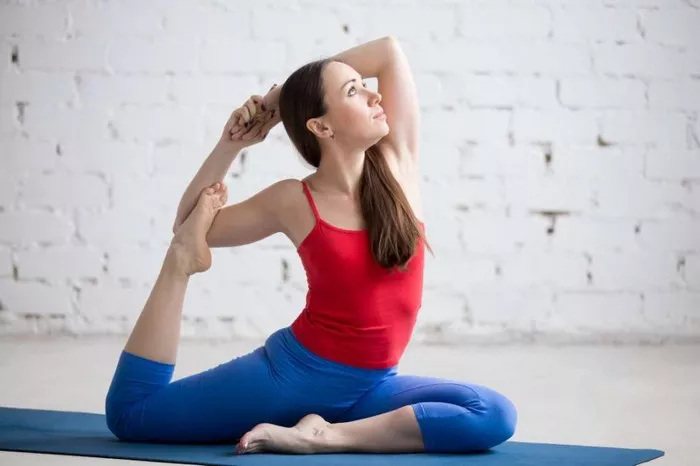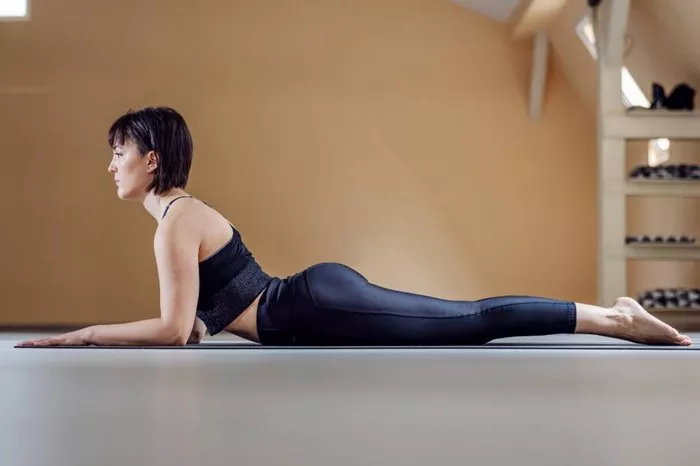Yoga, as an ancient practice, offers a wide variety of postures (asanas) designed to improve strength, flexibility, balance, and mental focus. Among the many asanas, Chair Pose, or Utkatasana, stands out for its power to strengthen the body, challenge the mind, and enhance overall wellness. Despite its simplicity, the chair pose offers deep benefits that go beyond just a physical workout. This article will delve into the purpose of Chair Pose in yoga, exploring its physical, mental, and energetic benefits, and providing insight into how it fits into the broader context of a yoga practice.
Understanding Chair Pose: An Overview
Before diving into the specific benefits and purposes of Chair Pose, it’s important to understand what this asana entails. Chair Pose is often referred to as Utkatasana in Sanskrit, where Utkata means “powerful” or “intense,” and asana means “pose.” This pose is essentially a standing posture where the practitioner bends their knees, as if sitting into an imaginary chair, while maintaining an upright torso. It is often included in yoga sequences as a way to build strength and stamina, particularly in the lower body.
How to Perform Chair Pose
To perform Chair Pose correctly, follow these steps:
Start in Mountain Pose (Tadasana): Begin by standing tall with your feet hip-width apart, arms by your sides, and your weight evenly distributed across both feet. Engage your thighs, lift your chest, and keep your spine long.
Bend the Knees: Slowly begin to bend your knees, lowering your hips toward the ground as if you’re about to sit down in a chair. Ensure that your knees are tracking directly over your toes, not extending beyond your ankles.
Lower Your Hips: Continue lowering your hips until your thighs are parallel to the floor, or as close as you can comfortably go. Imagine your hips are being drawn back, similar to the motion of sitting into a chair.
Extend Your Arms: Raise your arms overhead, keeping them close to your ears and parallel to the floor. Reach actively through your fingertips, engaging your shoulders, but avoid arching your back.
Hold the Pose: Maintain the pose for a few breaths, keeping your core engaged to protect your lower back. Keep your weight in your heels and focus on a spot in front of you to maintain balance.
Release: To come out of the pose, slowly straighten your legs and return to standing in Mountain Pose.
While the posture may seem deceptively simple at first, it engages multiple muscle groups and demands both mental focus and physical endurance.
The Purpose of Chair Pose in Yoga
Now that we understand the basic execution of the pose, let’s explore why Chair Pose is often included in yoga sequences and what its primary purposes are:
1. Building Lower Body Strength
One of the primary purposes of Chair Pose is to build strength in the lower body, particularly in the legs and hips. When you bend your knees and lower your hips in Chair Pose, you are working the quadriceps, hamstrings, and gluteal muscles. These muscles have to engage to keep the posture stable and sustained.
Quadriceps: The quadriceps are the muscles located at the front of the thighs. As you bend your knees and lower your hips, the quadriceps have to engage to keep your knees from collapsing inward. This strengthens the entire muscle group, improving both endurance and power.
Glutes: The gluteal muscles (gluteus maximus, medius, and minimus) are responsible for stabilizing the pelvis and helping with hip movement. In Chair Pose, the glutes work hard to maintain balance and keep the hips level.
Hamstrings: Though the hamstrings are not as directly engaged as the quadriceps or glutes, they are still involved in maintaining the integrity of the posture and aiding in balance.
By holding the pose for a longer duration, you effectively increase the time under tension for these muscles, promoting strength and endurance.
2. Improving Balance and Coordination
Another significant benefit of Chair Pose is its ability to enhance balance and coordination. As you sink into the pose, you must engage your core muscles to maintain stability and prevent tipping forward or backward. This requires not only strength but also a fine-tuned sense of balance.
To keep the pose steady, practitioners often need to adjust their weight distribution and make slight corrections in their posture. The balance aspect of Chair Pose involves both physical and mental coordination, strengthening the body’s proprioceptive system (the ability to sense the position and movement of the body in space).
Core Engagement: The core muscles—comprising the abdominals, lower back, and obliques—play a crucial role in maintaining balance during Chair Pose. These muscles help stabilize the pelvis and spine, preventing excessive arching or rounding of the back.
Foot Stability: Even though the focus is on the lower body, balance begins with a solid foundation. The feet must be firmly rooted to the floor, engaging the muscles of the feet and ankles to support the pose.
Over time, practicing Chair Pose improves balance, coordination, and proprioception, which can benefit other aspects of yoga as well as day-to-day activities.
3. Stimulating the Cardiovascular System
Chair Pose, especially when held for longer durations or integrated into a flow, has the potential to elevate your heart rate and stimulate the cardiovascular system. By engaging large muscle groups in the lower body, the pose encourages blood flow throughout the body. This can help improve circulation and cardiovascular endurance over time.
The activation of muscles in the legs and core requires the heart to pump blood more efficiently to these areas, promoting overall cardiovascular health. When incorporated into a dynamic yoga flow (such as Sun Salutations), Chair Pose can serve as an excellent heart-opening, energy-boosting posture.
4. Stretching and Strengthening the Spine
Though Chair Pose is primarily focused on strengthening the lower body, it also has a secondary effect on the spine. As you reach your arms overhead and maintain an upright torso, your spine is gently lengthened. This stretch can help counteract the compression that can build up in the spine due to poor posture or sedentary lifestyles.
Spinal Alignment: The action of extending the arms overhead encourages the upper body to lift and elongate, creating space between the vertebrae. By maintaining a neutral spine and avoiding arching the lower back, Chair Pose promotes healthy spinal alignment.
Relieving Back Tension: For people who experience tension or tightness in the lower back, Chair Pose can offer relief by strengthening the muscles that support the spine and encouraging proper posture.
5. Building Mental Strength and Focus
Yoga is not just about the physical benefits; it also fosters mental clarity, emotional balance, and inner strength. Chair Pose challenges the practitioner to focus their attention, maintain composure, and hold the pose despite physical discomfort. The longer the pose is held, the more mental stamina it requires.
Concentration: Chair Pose demands focus, especially as the legs begin to burn or tire. By focusing on breath, alignment, and maintaining balance, the practitioner develops mental fortitude.
Endurance: The ability to hold the pose for an extended period cultivates endurance, not only in the body but also in the mind. This endurance can translate into greater patience and resilience both on and off the mat.
Mind-Body Connection: Chair Pose serves as a powerful reminder of the mind-body connection. As the body grows fatigued, the practitioner must focus on breath control and body awareness to stay grounded and balanced. This fosters a deeper relationship with both the body and the present moment.
6. Improving Posture
Chair Pose helps develop the muscles responsible for good posture, particularly the core and back muscles. By maintaining an upright torso and engaging the muscles along the spine, practitioners learn to carry themselves with greater awareness and alignment. This awareness can be translated into daily life, encouraging better posture both while sitting and standing.
In particular, Chair Pose engages the muscles of the lower back and the shoulders, helping to counteract the effects of slouching or forward head posture that many people develop from prolonged sitting.
7. Detoxification and Energy Flow
Chair Pose, like many other yoga poses, helps stimulate the body’s internal organs. The compression and release of the abdomen during the pose can help massage the digestive organs, promoting healthy digestion and detoxification.
Additionally, holding Chair Pose helps open the chest and ribs, encouraging deeper breathing. This breath awareness facilitates the flow of energy (prana) throughout the body, increasing vitality and reducing stress.
8. Preparing for More Advanced Postures
Chair Pose is often used as a preparatory posture for more advanced asanas. It helps build the necessary strength, flexibility, and balance needed to tackle other challenging poses, such as Warrior III, Half Moon, or Chair Pose variations like Twisted Chair. As a foundational posture, it teaches the practitioner essential principles of alignment, engagement, and breath control, all of which are crucial for advancing in a yoga practice.
Conclusion
Chair Pose (Utkatasana) is much more than a simple standing posture. Its multifaceted benefits span the physical, mental, and energetic realms, offering practitioners a powerful tool for building strength, balance, and endurance. The pose strengthens the lower body, stimulates the cardiovascular system, improves posture, and enhances mental focus, making it an essential part of many yoga sequences.
By practicing Chair Pose regularly, practitioners can enjoy its many benefits, which extend far beyond the yoga mat. Whether you are a beginner or an experienced yogi, the Chair Pose offers a solid foundation for personal growth, physical vitality, and mental clarity. So, the next time you step into this powerful posture, remember that its purpose is not only to challenge the body but also to cultivate resilience, focus, and energy.
Related Topics:























